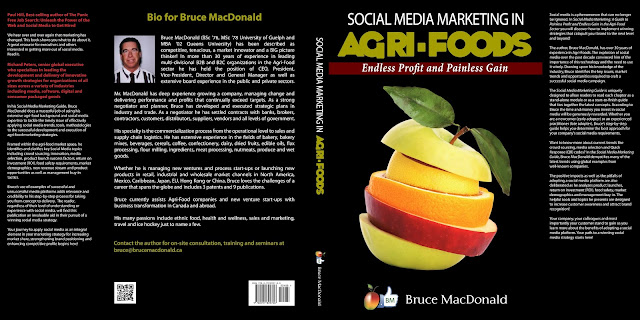2014 RESTAURANT TRENDS REFLECT FOOD PREFERENCES, SOCIETAL SHIFTS
Posted in News, Foodservice, Restaurant, Fast Casual, QSR, Market Research, Market Trends,Consumer Preference, Flavor, Taste, Menu, Technology, Proteins, Beef, Chicken, Pork, Barbecue, Egg,Vegetarian, Mushrooms, Beans, Soy, Carbohydrates, Grains / Pasta / Tuber, Pasta, Rice, Asian, Ethnic,Healthy, Healthy Foods, Bread, Grains, Whole Grain, Breakfast, Cheese, Texture, Fats/Oils, Sauces / Gravies / Soup, Sauces, Fried Foods, Appetizers, Fermentation, Onions, Ginger, Fruits / Vegetables,Fruit, Vegetable, Beverages, Alcohol, Beer, Wine, Snack Foods, Convenience Foods, Costs, Packaging,Demographic, Soup, Desserts, Coffee, Water
CHICAGO—Technomic revealed 10 trends expected to hit the restaurant industry—from technology to politics to menu innovations, the assessment looks at multiple developments reflecting larger, societal trends and specific, emerging food preferences.
Technomic's industry consultants and editors conducted on-site restaurant scene evaluations in cities across the country, as well as interviews and surveys of operators, chefs and consumers to determine what the industry can expect in the coming year. Further, the trends are backed by qualitative data from Technomic's Digital Resource Library and quantitative data from its MenuMonitor database. Trends include:
Technomic's industry consultants and editors conducted on-site restaurant scene evaluations in cities across the country, as well as interviews and surveys of operators, chefs and consumers to determine what the industry can expect in the coming year. Further, the trends are backed by qualitative data from Technomic's Digital Resource Library and quantitative data from its MenuMonitor database. Trends include:
- Convince me it's real: Consumers want assurances that what they're eating is real—menus describe items thoroughly, listing not only the ingredients but also where they came from and how they were prepared. Local sourcing is important, but beyond that is the idea of being true to place; if the restaurant positions itself as authentically Italian, consumers expect ingredients sourced from Italy and/or prepared using authentic Italian methods.
- Pushing the parameters of proteins: Rising commodity costs for beef mean that chicken will be big again in 2014. However, pork is rising in popularity—appearing in regional barbecue items, in Hispanic and other ethnic fare, in charcuterie and as pulled-pork sandwiches. Lamb and game meats, from duck to bison, are also becoming more popular. Beyond meat, creative center-of-the-plate egg dishes, as well as vegetarian alternatives, from mushrooms to beans to soy-based products, are expected to take hold.
- Return of the carbs: Starches are staging a comeback—from ramen to buckwheat noodles to pasta made with unusual ingredients. Rice bowls (and jasmine rice, basmati rice, brown rice) will be big, in part because of continued fascination with Asian fare and in part because of an association with healthfulness. Flatbreads, wraps and artisan breads, including healthy whole-grain varieties are on the horizon. Waffles, as a base or side, make traditional savory items like chicken seem edgy.
- Creamy, cheesy, high-fat goodness: Technomic expects more cheese melts, pasta with creamy sauces, fried appetizers and sides, and oddities like doughnut-based sandwiches. However, super-indulgent items, like Wendy's 9-patty burger, are crafted more for social-media buzz than for eating.
- Pucker up: Forays into less-familiar ethnic cuisines, from Korean to Scandinavian, are partly responsible for growing interest in pickled, fermented and sour foods. Korean kimchi, as well as pickled onion, jalapeño, ginger and radish, are emerging everywhere from ethnic eateries to burger joints. On the beverage menu, the trend is seen in sour cocktails as well as new flavor combinations with sour notes.
- Day for night: Consumers are less likely to eat according to a three-square-meals schedule; they snack, skip meals, eat breakfast for dinner and vice versa. More restaurants are introducing innovative breakfast items—like chicken, turkey or steak breakfast sandwiches or super-spicy wraps with chipotle or Sriracha—often available all day. And while breakfast-and-lunch-only concepts are building a niche, other operators are promoting late-night breakfast menus, often in conjunction with 24-hour drive-thru service.
- Every daypart is a snack daypart: As the snacking lifestyle goes mainstream, diners are paradoxically less interested in snack menus. Millennials see dollar and dollar-plus menus as the snack menu. LSRs are paying more attention to snack-size handhelds and car-friendly packaging; they're also adding grab-and-go or market-style offerings. As FSR customers move away from meat-and-potatoes meals, operators are catering to the snacking-and-sharing ethos with pairings, trios and flights from all parts of the menu—from soup trios to beer samplers to retro popsicle-flight desserts.
- On tap: Tap technology is revolutionizing the beverage world: barrel-stored cold-brewed coffee that can be sent through repurposed beer taps, facilitating a new kind of coffee bar; soda-water taps that allow chefs to create their own fruity soft drinks; wine-on-tap tasting stations in high-end supermarkets; keg-wine bar concepts and retrofits; self-serve beer-tap walls at high-tech pubs.
- For fast service, bring your own device: Customers are modifying menu items, which makes for a slow service line. Operators in every segment are finding new ways to use technology for faster, more accurate ordering. iPad orders placed tableside will be a point of differentiation for a few tech leaders, but primarily a bring-your-own-device system of advance and inside-the-restaurant ordering will emerge—as well as more customer feedback and interactive conversations. In the back of the house, increased use of iPad communication will make new menu items easier to roll out.
- Everything is political: Consumers are increasingly aware that the personal is political—their choices and those of the restaurants they patronize regarding food, treatment of employees and suppliers, sustainability and the environment have real consequences. Consciously or unconsciously, they will gravitate to concepts that share their worldview, and some restaurants will promote this cultural identification.
Sources:
- Technomic: Technomic's Take: 10 Trends for 2014
Check out my new e-book entitled: "Social Media Marketing in Agri-Foods: Endless Profit and Painless Gain"
The book is available on Amazon and Kindle for $4.99 USD. Visit amazon/Kindle to order now:
http://www.amazon.ca/Social-Media-Marketing-Agri-Foods-ebook/dp/B00C42OB3E/ref=sr_1_1?s=digital-text&ie=UTF8&qid=1364756966&sr=1-1
Thanks for taking the time


No comments:
Post a Comment